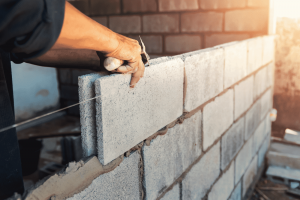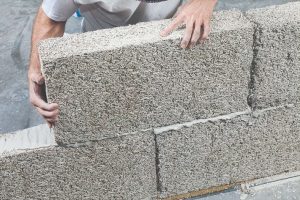What is the Strongest Natural Building Material?
Introduction
When it comes to constructing buildings that can withstand the test of time and natural elements, the choice of building material is of utmost importance. While modern construction materials like steel and concrete have their advantages, natural building materials have been used for centuries due to their unique properties. Among these, some stand out for their exceptional strength and durability. In this article, we will explore the strongest natural building materials and their significance in sustainable construction practices.
1. Bamboo: Nature’s Wonder
Bamboo is a fascinating natural material renowned for its strength and versatility. While often mistaken for a tree, bamboo is a type of grass that grows abundantly in various regions worldwide. Its strength-to-weight ratio surpasses that of steel, making it an excellent choice for building structures.
Bamboo’s Incredible Strength
The secret to bamboo’s strength lies in its internal structure. It consists of numerous fibers running parallel to its length, creating a strong and flexible composite material. Additionally, bamboo has nodes that act as natural reinforcement points, enhancing its overall durability.
Benefits of Bamboo in Construction
Sustainability: Bamboo is highly sustainable due to its rapid growth rate. It matures within 3-5 years, compared to traditional hardwoods that can take several decades.
Carbon sequestration: As bamboo grows, it absorbs a significant amount of carbon dioxide, helping combat climate change.

Flexibility: Bamboo’s flexibility makes it an ideal material for earthquake-prone areas as it can withstand lateral forces without breaking.
Cost-effectiveness: Bamboo is more affordable than many modern building materials, making it a viable option for cost-conscious projects.
2. Rammed Earth: Timeless Strength
Rammed earth is an ancient construction technique that involves compacting a mixture of earth, clay, sand, and gravel within a frame to form load-bearing walls. This method has been used for centuries and is renowned for its strength, durability, and thermal properties.
The Strength of Rammed Earth
The process of ramming and compacting the earth mixture results in walls that can withstand significant pressure and loads. The cohesion between particles creates a robust structure capable of lasting for centuries.
Benefits of Rammed Earth Construction
Thermal Mass: Rammed earth walls have excellent thermal mass, meaning they can absorb, store, and slowly release heat, keeping interiors cool in summer and warm in winter.
Low Environmental Impact: Rammed earth construction relies on locally-sourced, natural materials, reducing the carbon footprint of the building process.
Fire and Pest Resistant: Rammed earth walls are naturally fire-resistant and unattractive to pests, providing added safety and longevity.
3. Limestone: The Time-Tested Stone
Limestone is a sedimentary rock that has been used in construction for millennia. Its enduring popularity is due to its exceptional strength, durability, and aesthetic appeal.
Unyielding Strength of Limestone
Limestone is formed by the accumulation of minerals over time, creating a dense and robust stone. When used in building construction, it can bear heavy loads and resist weathering effectively.

Benefits of Using Limestone
Longevity: Limestone structures, such as the Pyramids of Giza, stand as a testament to its long-lasting nature, proving its ability to withstand the test of time.
Aesthetic Appeal: Limestone’s natural beauty adds a touch of elegance to any building, making it a favorite among architects and designers.
Sustainable Extraction: Limestone is abundant and easy to quarry, making its extraction process more environmentally friendly compared to other stones.
4. Cob: The Earthy Fortress
Cob is an ancient building material made from a mixture of clay, sand, straw, and water. Often used for constructing thick walls, cob has remarkable strength and thermal properties. for a builder in vaucluse see here.
Strength and Durability of Cob
Cob structures possess incredible compressive strength due to the clay and sand mixture, along with tensile strength from the straw fibers. This combination creates sturdy walls that can withstand various environmental conditions.
Benefits of Cob Construction
Sustainability: Cob is made from locally available materials, reducing transportation costs and carbon emissions.
Thermal Performance: Cob’s thick walls provide excellent insulation, keeping interiors cool in summer and warm in winter.
Easy to Work With: Cob is a user-friendly material, allowing builders to sculpt and shape walls creatively.
Conclusion
When considering the strongest natural building material, it is clear that nature offers a wide range of options with unique properties and benefits. Bamboo’s incredible strength, rammed earth’s time-tested endurance, limestone’s enduring elegance, and cob’s earthy robustness all stand as prime examples of how sustainable construction can embrace nature’s gifts. Incorporating these materials into modern building practices not only results in durable and resilient structures but also promotes a more eco-friendly approach to construction, paving the way for a sustainable future.
